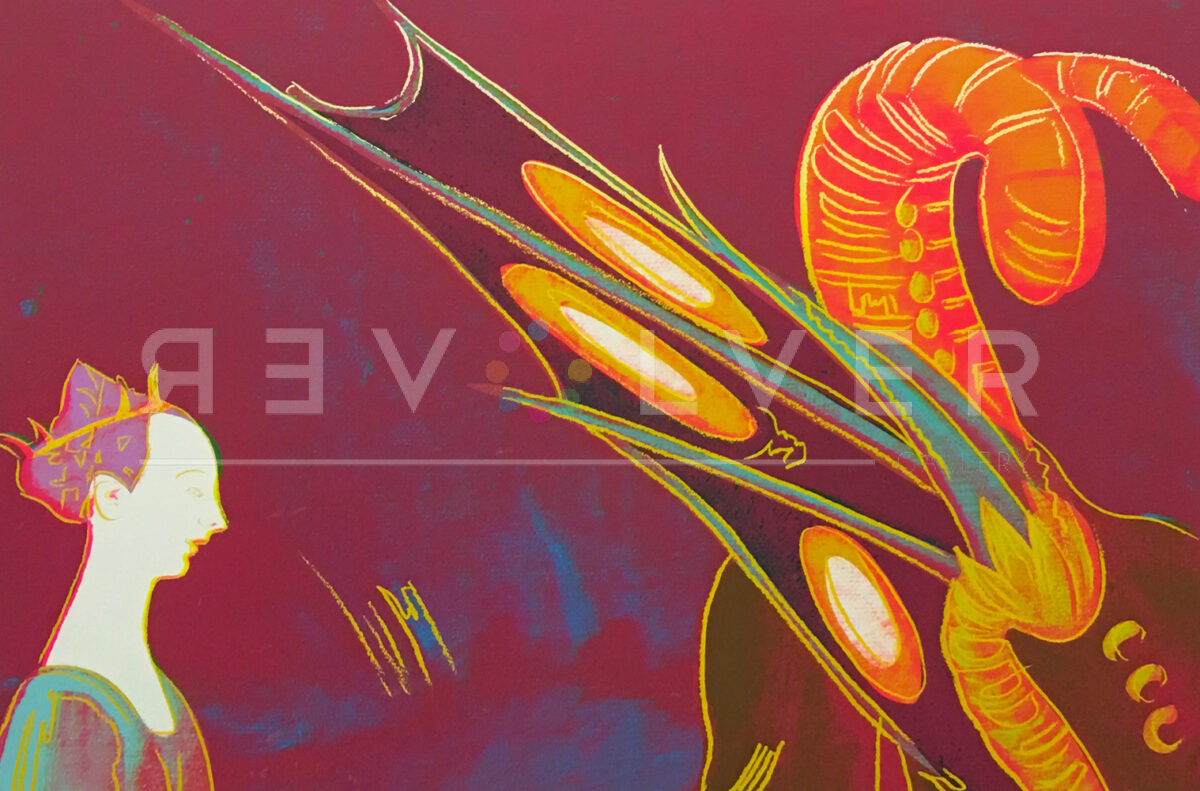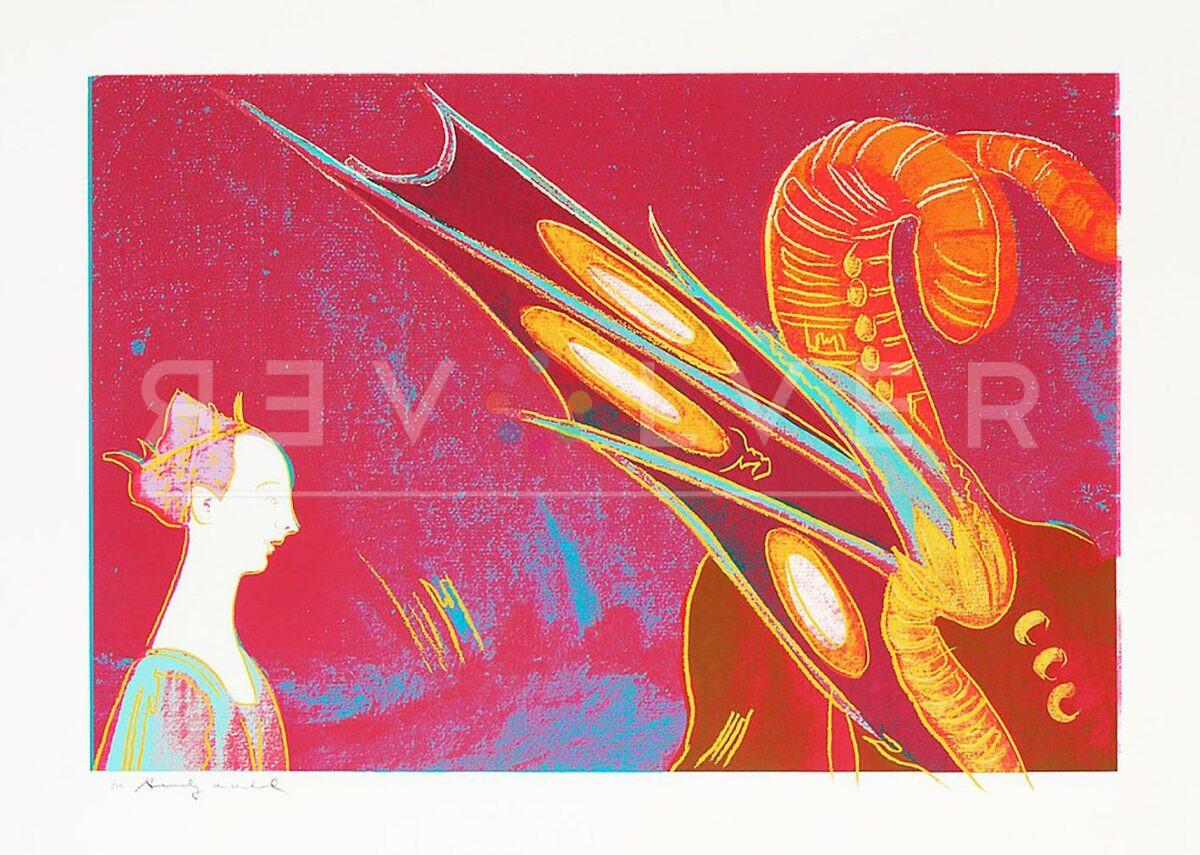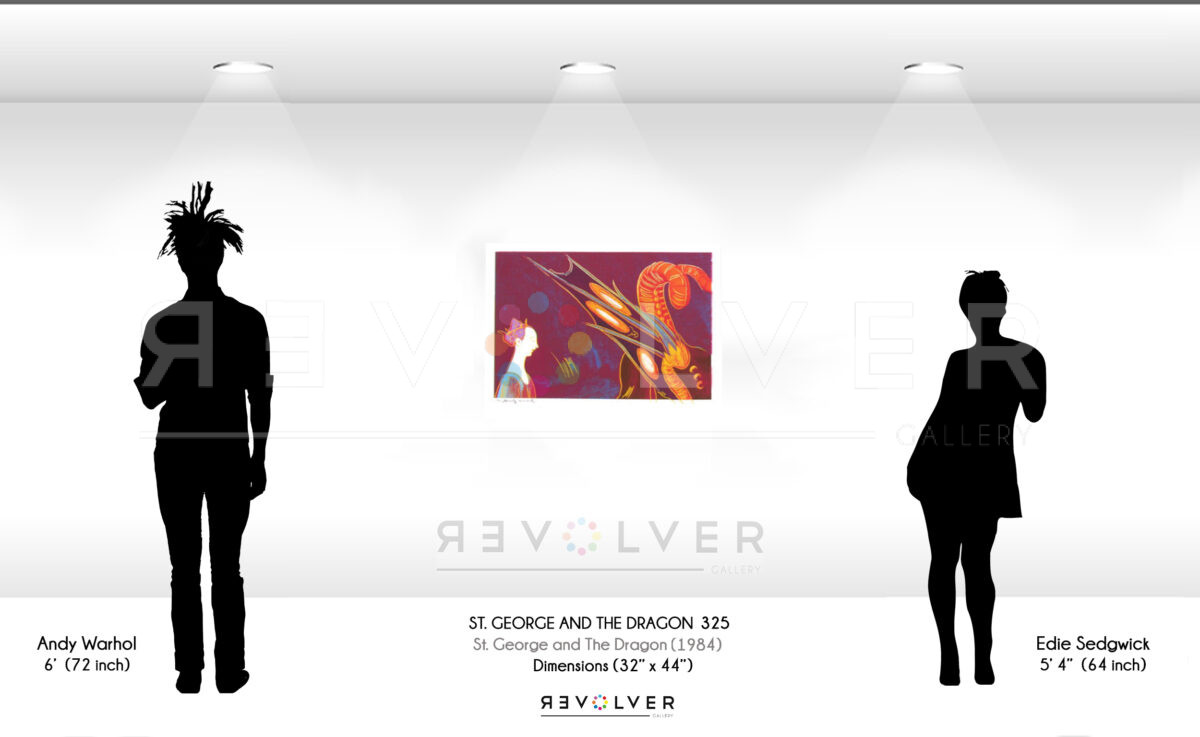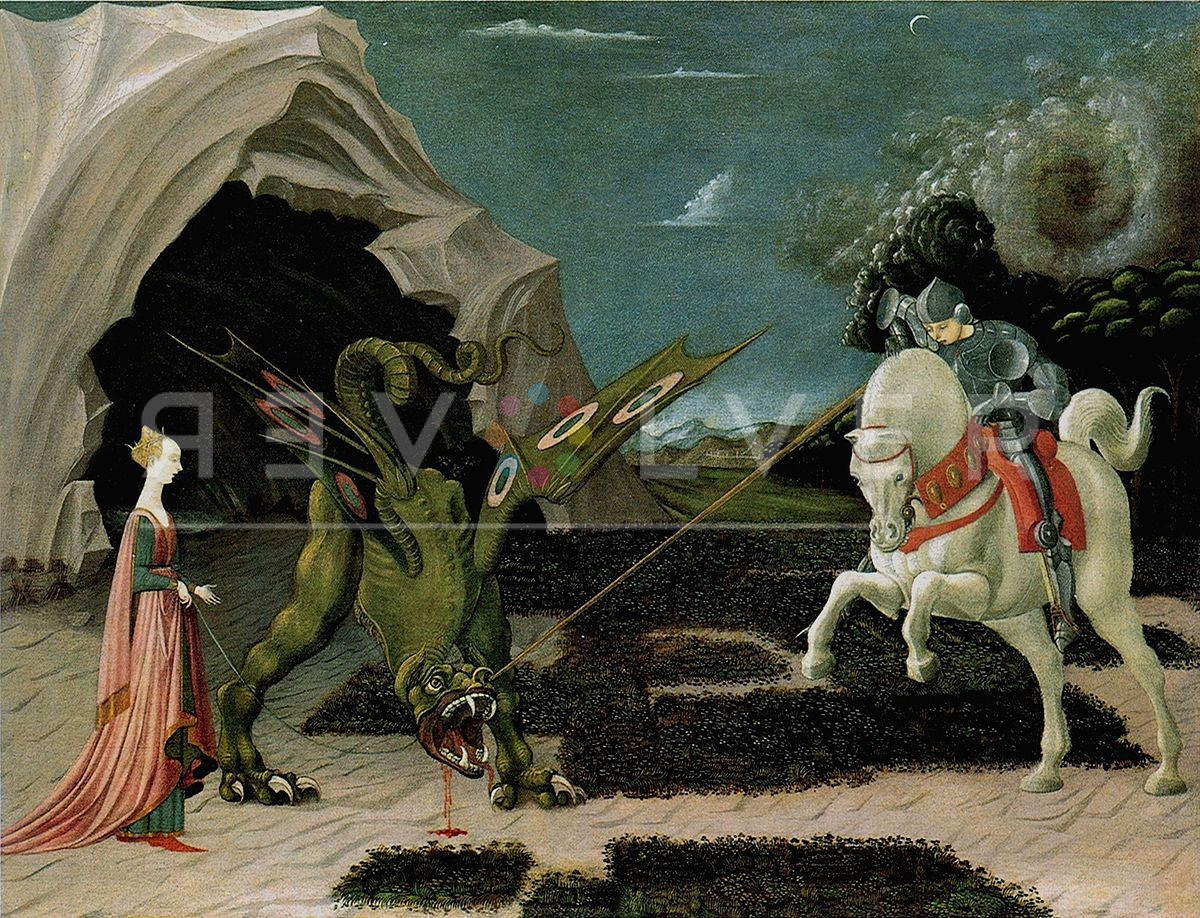Andy Warhol’s St. George and the Dragon 325 is a screenprint from the artist’s Details of the Renaissance Series, specifically the “Details of the Renaissance Paintings (Paolo Uccello, St. George and the Dragon, 1460)” portfolio.
Warhol’s larger portfolio entitled “Details in Renaissance Paintings” includes several famous paintings that Warhol transformed with his signature pop art style, one of them being Paolo Uccello’s masterpiece, St. George and the Dragon, from 1460. Warhol recreated this painting into a screenprint of four, using different color combinations to add individuality to each print. Warhol’s version of St. George and the Dragon showcases bold colors with a red-tone film that covers the whole print. This gives it a more Pop and unique feel to the print. By focusing on the damsel’s upper body and one of the dragon’s wings, Warhol was able to extract a curious portion of the scene from the larger painting to emphasize detailing and recontextualize the artwork.
St. George and the Dragon 325 by Andy Warhol as Part of His Larger Body of Work
Warhol wanted to refurbish Italian Renaissance paintings into Pop Art prints with bold colors. However, by producing many prints of different color combinations with the help of the screenprinting process, Warhol’s pieces became more commercialized. By focusing on specific parts of the original paintings, Warhol extracts new meaning from the ultrafamous artworks, creating a commentary of his own and allowing us to reconsider the paintings. This forced his audience to look at his prints separate from the original paintings, from a Pop art perspective. Despite Warhol’s intent to strip his works from the painting’s original context, he still honored and respected the works of the great artists of the Renaissance era.
Photo credit: Artwork that inspired Warhol by Paolo Uccello titled St. George and the Dragon, c. 1470. Courtesy of the National Gallery in London.





